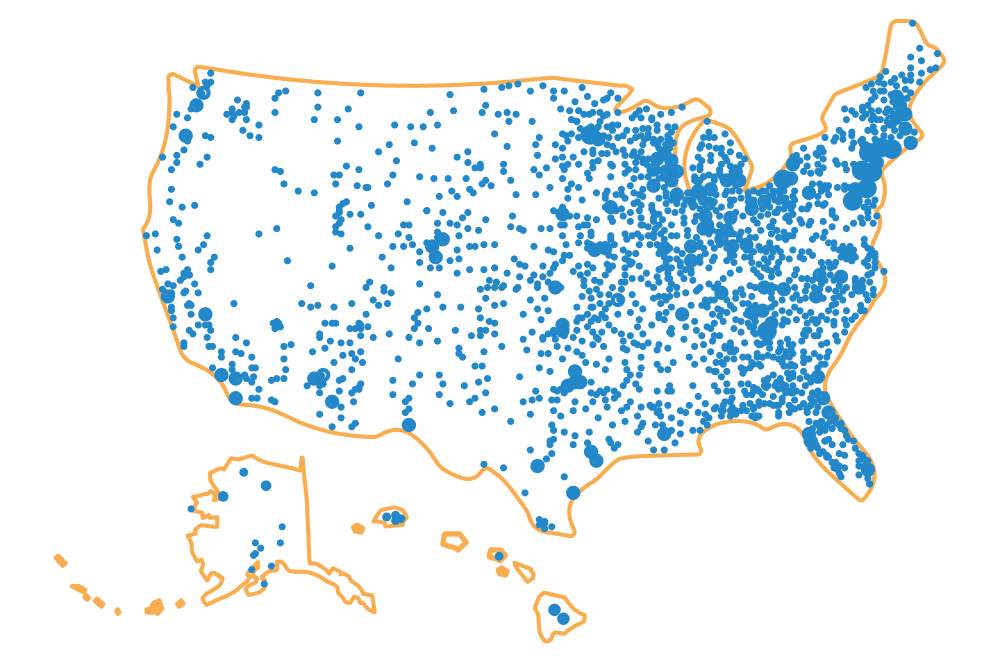529 plans can be used in combination with financial aid and scholarships, but it is important to understand how they work. 529 plans are taken into consideration when determining financial-aid eligibility, but their impact on financial aid is minimal.
Financial aid can come from various sources. The two most common are federal financial aid from the federal government and aid that may be offered by specific higher education institutions.
First, let’s discuss federal financial aid. It is important to be aware that federal financial aid is commonly offered in the form of a loan, meaning that the student will have to repay the financial aid in the future. Always be sure that you understand the type of aid being offered and whether or not you will have to repay it and the accumulated interest. In order to start the process of applying for federal financial aid, the student (and/or parent) will need to complete and submit the Free Application for Student Financial Aid (FASFA).
Application questions include the parents’ assets and income as well as the student’s assets and income. This information is added to a formula to determine the Expected Family Contribution (EFC). The EFC represents what a family can be expected to cover for higher education expenses. The difference between the total cost of enrollment and the EFC represents the remaining costs that might be subsidized through federal student aid based on need. Federal student aid is available in the form of Pell Grants (monies that do not need to be repaid), federally subsidized student loans (funds that must be repaid after college with interest), work-study programs, and loans parents can borrow from the federal government. While you may decide not to accept the offer of a student or parent loan, you should still complete the FASFA. In addition, even if you think that you won’t qualify for financial aid, it is still recommended that you complete the FASFA because it is sometimes used by other entities when applying for scholarships and other forms of aid.
The assets in a 529 plan are a component in determining the EFC. Current federal guidelines state that if a student is a dependent and the 529 account is owned by a parent, then the 529 plan account will be considered the parent’s asset and will be calculated at just 5.64% of its value when determining the EFC. However, if the student is not a dependent and is the account owner, the 529 plan account will typically be treated as the student’s asset and is generally factored into the EFC at the higher rate of up to 20%.
A side note: Custodial 529 accounts, funded from proceeds of an UTMA or UGMA account and Trust accounts, are treated as parental assets for the purpose of determining EFC. For additional information, please read page 7 of the CollegeAdvantage Direct Plan Offering Statement.
Remember, a considerable benefit of a 529 plan is that when a distribution is taken from a parent-owned account to cover a 529-qualified higher education expense of a dependent beneficiary, the amount of the distribution is not considered as income for the student and will not have to be included in next year’s FASFA. Therefore, a qualified distribution from a 529 account, in this situation, will not affect a student’s opportunity for financial aid.
This could change with a grandparent-owned 529 plan. As long as the funds remain in this type of account, it is not recorded on the FAFSA as part of the student’s income and it is not listed as a parental asset. However, once there is a withdrawal from this grandparent-owned account, the monies distributed will have to be listed as part of the student’s income on the FAFSA for the following year. And as part of a student’s income, the withdrawal will be assessed at 50% for the EFC. Therefore, it will have a negative effect on the student’s financial aid eligibility for the following school year. Federal financial aid calculations are complicated. You should consult a financial aid expert and your tax or financial advisor before setting up or requesting any withdrawal from a grandparent-owned account (or any account that is not owned by the dependent’s parent).
A second financial aid option is available through higher education institutions. Most colleges and universities have their own financial assistance programs to offer students. Whether or not 529 plans can be a factor in such monetary-assistance decisions is completely up to the specific school. Institutions vary in how they determine to distribute their financial assistance: Some schools follow the federal EFC formula; others use the CSS Profile (another formula developed by the College Board); and lastly, other schools have their own individual forms and calculations. For universities that use the federal EFC, 529 plan accounts have already been incorporated in the formula.
So yes, 529 plans can have an impact on financial-aid eligibility and amount; but it’s commonly only a minor effect. The advantages of tax-free growth and tax-free withdrawals can easily outweigh the total cost of repaying a loan plus interest. And these are only some of the benefits.
If you would like to start planning ahead for financial aid, try the FAFSA4caster, a free financial aid calculator that gives you an early estimate of your eligibility for federal student aid.
Please Note:
CollegeAdvantage is a 529 college savings plan offered and administered by the Ohio Tuition Trust Authority, an office within the Ohio Department of Higher Education. Before investing, please read the Offering Statement and all Supplements carefully and consider risks, fees, your investment objectives, and other relevant factors, before investing. If you are not a taxpayer in the State of Ohio, you should consider whether your home state offers any state tax or other benefits for investing in its 529 Plan. Other than the Fifth Third Investment Options (Banking Options), money contributed to an Account is not a bank deposit and is not insured by the FDIC or guaranteed in any way. Except for contributions invested in Banking Options, participants assume all investment risk related to the CollegeAdvantage Direct Plan, including the potential loss of Principal. Contributions invested in Banking Options are an obligation of Fifth Third Bank and are insured by the FDIC, subject to certain limitations.
The Ohio Tuition Trust Authority does not provide investment advice. The information contained herein is informational only and should not be relied upon exclusively to make your investment decisions.








